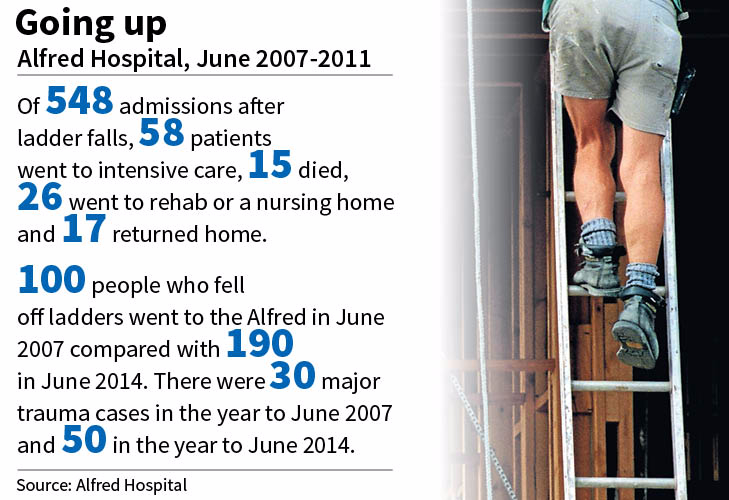Even Climbing the Ladder of Success Requires Safety Equipment and a Safety Analysis

On any construction site you are bound to see at least one ladder being used to conduct work at heights. However, statistics show from 2003 to 2012 that 46 workers died falling from a ladder. This indicates some serious flaws in the risk management process for this device. To help you successfully reduce workplace death and injury due to ladders, here are 3 handy tips!

1: Replace ladders with scaffolding
Often when faced with a task that cannot be completed from ground level, people’s first instincts are to reach for a ladder. Perhaps being so commonplace in households combined with its lack of mechanical operation make ladders seem like the best quick-fix. However, reports suggest that for heights of over 2 meters, scaffolding is often a much safer solution. Learn how to safely set up a scaffolding system here.
2: Use Personal Protective Equipment (PPE)
If there is no alternative to using a ladder, you should ensure workers are properly inducted as to what equipment to be using. For ladders this can include the use of safety harnesses and special non-slip boots.
3: Treat all types of ladders sensibly and with caution
Your instinct might be to brush this tip off as too obvious, but statistics show that even step-ladders have lead to serious injury in the workplace. All construction involves a degree of risk, so even the use of ladders should involve a risk assessment. According to Safe Work Australia, working at a height of above 2m requires taking even greater precautions as you must complete a SWMS.
It is important to ensure these safety measures are communicated to any workers on your site. Using our software that line of communication can be that much easier for you!

